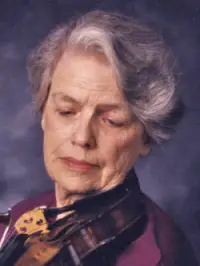[dropcap size=big]L[/dropcap]ike careful hypnotism, the discipline of musical therapy takes individuals deeper into themselves than they can consciously go. Music as a means among many for therapeutic purposes presents practitioners with a unique medium for monitoring and guiding individuals, but just how pivotal of a role might music actually be playing in the process?
The Bonny Method of Guided Imagery and Music
When Helen Lindquist Bonny set about developing her own unique blend of psychotherapy techniques, the interlaced dominions of therapy and music education influenced her deeply. By combining these, she arrived at the idea of combining the visual with the musical as well, using songs as the directional force in Guided Imagery Therapy.
…developing her own unique blend of psychotherapy techniques, the interlaced dominions of therapy and music education influenced her deeply.
Like lucidity in a dream state, the Bonny method makes you the center of your own imagined scenario, but the scenario is borne of sound and your reactions to it.

Guided imagery as a powerful psychotherapeutic tool is as old as psychotherapy itself. Chasing down the labyrinthine corridors of the mind becomes a fair bit easier with closed eyes and an open mind.
The “mind’s eye” itself was mentioned by name at least as far back as Cicero’s usage of the term. “Mentis Oculi” as the philosopher himself described it was best utilized through clear direction; his quote on the matter being:
“The eyes of the mind are more easily directed to those objects which we have seen, than to those which we have only heard.”
Little did Cicero know, our minds might also benefit from the guidance of music in this process as well.
Bonny’s musical method makes use of factors such as the client’s personal music preferences and their goals. Musical choices in this form of therapy tend to be classical and very carefully suited to age range, among other things.
The Bonny method has been proven effective in taming problem behavior in autistic children and even prompting improvements in communication overall. Could the effect of such a method extend beyond, to average listeners enjoying their favorite songs? Maybe.
Self-Soothing with Music
Anyone who’s listened to music in a particularly emotive state knows just how impactful it can be. Just how present is music in our minds’ daily processes? Does music color our thoughts and actions or does it merely enhance them?
There’s a good body of research in existence that demonstrates music’s ability to induce heightened states of relaxation. When we listen to music, especially songs with soft, easy rhythms and classical structures, it’s relatively normal for the sympathetic nervous system to be suppressed (lower heart rate, etc.). However, at the same time, our parasympathetic nervous system is shown to be heightened under such conditions (sexual arousal, etc.), which sheds light on late night freaky times benefiting from the addition of music, right?
Even without intentionally guiding our thoughts to therapeutic states, merely hearing music can make us feel better, like melodious medicine.
Outside the realm of intentional therapy, music forms a mainstay in the lives of most people. Whether it be an hour of melody to take the mind off a morning commute, songs streamed through headphones while on the job, or a playlist unpaused for relief at day’s end… Music is important to almost everyone, and the pleasure it brings us might almost be deemed self-soothing of sorts.
Music can be relaxing, as can familiarity of surroundings and sounds. Familiar songs could serve a double-effect of relaxing the mind and making any space in which we’re listening feel safer. Even without intentionally guiding our thoughts to therapeutic states, merely hearing music can make us feel better, like melodious medicine.
Music As Passive Therapy
“Music was my refuge. I could crawl into the space between the notes and curl my back to loneliness.”
A deeper sensory experience comes along with the use of music throughout the therapeutic process. It stands to reason this effect transcends such a setting though, granting listeners deeper connection to their thoughts in the moment of listening. For reflection and contemplation, what could be better?
Rest of any sort is healing in nature. It could be that the most powerful part of music is its ability to make our environment more relaxing and inviting, giving us more opportunity for rest throughout the day.
Maya Angelou once said “Music was my refuge. I could crawl into the space between the notes and curl my back to loneliness.”
Music as refuge… A place you can’t physically feel, yet it’s as real as a memory and as healing as a dream.




